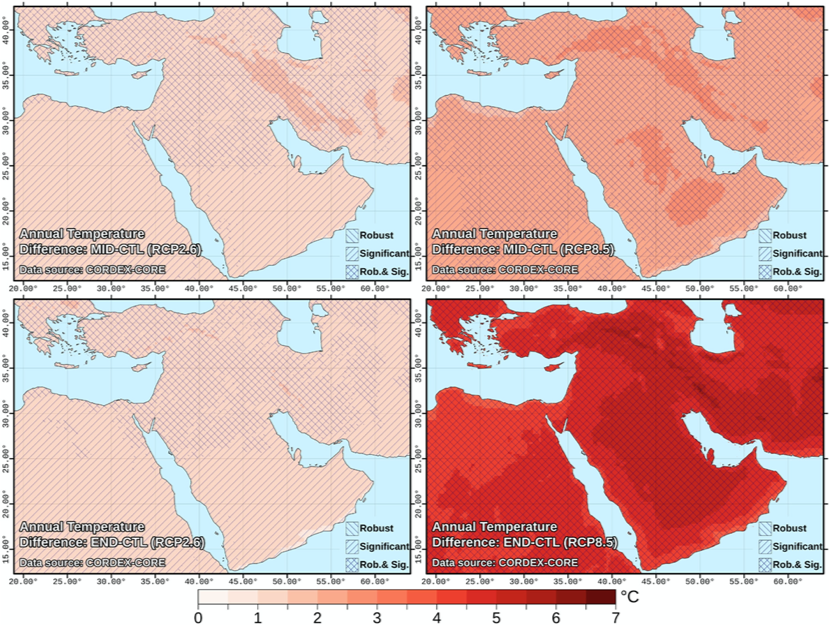A new report “Climate Change and Weather Extremes in the Eastern Mediterranean and Middle East”published in the journal Reviews of Geophysics, provides an updated, comprehensive assessment of the impacts of climate change in the Eastern Mediterranean and Middle East (EMME) region, covering a wide range of time scales, phenomena and possible future pathways. This review was prepared by an international group of scientists under the auspices of the Max Planck Institute for Chemistry and The Cyprus Institute.
It concludes that the region is warming almost two times faster than the global average and more rapidly than most other inhabited parts of the world. In recent decades, there are indications of a transition to a drier climate, especially in the Eastern Mediterranean. Today, greenhouse gas regional emissions are comparable to those of the EU and India, and the region will shortly become one of the world dominant greenhouse gas emitters. Virtually all socio-economic sectors will be critically affected by the projected changes, especially under strong climate forcing scenarios. Human health and well-being will be directly affected, especially among underprivileged people, the elderly, children, and pregnant women.
Abstract
Observation-based and modeling studies have identified the Eastern Mediterranean and Middle East (EMME) region as a prominent climate change hotspot. While several initiatives have addressed the impacts of climate change in parts of the EMME, here we present an updated assessment, covering a wide range of timescales, phenomena and future pathways. Our assessment is based on a revised analysis of recent observations and projections and an extensive overview of the recent scientific literature on the causes and effects of regional climate change. Greenhouse gas emissions in the EMME are growing rapidly, surpassing those of the European Union, hence contributing significantly to climate change. Over the past half-century and especially during recent decades, the EMME has warmed significantly faster than other inhabited regions. At the same time, changes in the hydrological cycle have become evident. The observed recent temperature increase of about 0.45°C per decade is projected to continue, although strong global greenhouse gas emission reductions could moderate this trend. In addition to projected changes in mean climate conditions, we call attention to extreme weather events with potentially disruptive societal impacts. These include the strongly increasing severity and duration of heatwaves, droughts and dust storms, as well as torrential rain events that can trigger flash floods. Our review is complemented by a discussion of atmospheric pollution and land-use change in the region, including urbanization, desertification and forest fires. Finally, we identify sectors that may be critically affected and formulate adaptation and research recommendations toward greater resilience of the EMME region to climate change.

Zittis, G., Almazroui, M., Alpert, P., Ciais, P., Cramer, W., Dahdal, Y., et al. (2022). Climate change and weather extremes in the Eastern Mediterranean and Middle East. Reviews of Geophysics, 60, e2021RG000762. https://doi.org/10.1029/2021RG000762
